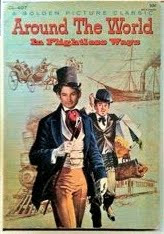


This prison, founded in 1840 and used right up until 1988, is grim and imposing. I like how they’ve kept it pretty much the same as it was. There are a few collections of artifacts and some information boards, but generally you feel like you’re walking around in an old prison. The cells are tiny and windowless.
Over the decades, 45 criminals were executed here, including the only woman in South Australia ever given the death penalty. Her name was Elizabeth Woolcock and was found guilty of poisoning her husband Thomas. The museum here speculates that she may not have been guilty. His autopsy found that he died of mercury poisoning and the evidence was that Elizabeth had sent her son to buy mercury on several occasions. She claimed this was for her headaches but the jury didn’t take long to pronounce her guilt. Shortly before her execution on 30 December 1873, she wrote some memoirs in which she described her unpleasant upbringing and gave something of a confession, writing that ‘she had given in to temptation’ after harsh treatment from her husband.
All those who were executed at the gaol were buried there and someone had recently left flowers at Elizabeth’s gravesite.



It's quite fashionable nowadays to revisit these trials of women and suggest that because it was all oppressive and sexist in those days the women murderers should be viewed as victims. Well, maybe there are such cases. But most women who suffered poor domestic situations didn't become murderers because of it.
ReplyDeleteThe last woman to be hanged in Britain, Ruth Ellis, was the subject of a campaign to have her declared innocent despite there being no doubt about her having killed her husband. Yet she herself never lodged an appeal before the execution.
The Parker/Hulme murder of Heavenly Creatures fame was another example in a slightly different context. Two NZ academics wrote a book in the 1990s claiming that (i) Parker & Hulme were lesbians, (ii) 1950s NZ was a suffocating enviroment for lesbians; (iii) therefore they were morally innocent despite having bashed the mother of one of them to death with a brick.
Well, leave aside the fact that the one who has spoken publicly since being discovered denies point (i). And I would accept point (ii). But that wasn't really the mother's fault, and even if it was, bashing her to death wasn't really a rational or otherwise defensible response, was it?
The authors interviewed other lesbian women who were alive at the time, and they confirmed having the odd murderous thought because of (ii) above. But there's all the difference in the world between occasionally wanting to harm someone and actually doing it.
It would also follow if 1950s NZ was so awful that the crime rate would be much lower nowadays, given that it is undeniably a far more permissive and tolerant society. And yet the crime rate has increased many thousands of times over (no that's not a typo). I wonder if that really constitutes a triumph for society.
The Old Adelaide Gaol is a grand building used to be a prison in South Australia. It was founded in 1840 and used till 1988.
ReplyDeleteHmm, funny that you raised the Parker-Hulme murders because another reader of this blog knows quite a lot about them. Kristen?
ReplyDeleteTo Virginia B & B: stop using my blog as advertising space. And try writing in coherent sentences. But thanks for reading.
Let me get my file...
ReplyDeleteJames, have you seen the documentary about the woman formally known as Juliet Hulme, 'Anne Perry - Interiors'?
Hi Kristen. No, I haven't - guessing it was made in NZ. Have been in Britain since 1998 so a bit out of touch
ReplyDelete